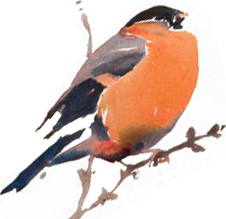Recording of unusual species in Lothian
For species considered rare at a local level to appear in the Lothian Bird Report, they have to be assessed by the Lothian Bird Records Committee (LBRC). Following a review in December 2007, the Committee adopted a more statistical approach to determining those species assessed. Analysis of the data produced some interesting results, and the Committee decided that the list should comprise all species with an average of three records or less in the most recent five-year period (for which data was available). This is broadly in line with a number of other local records committees in the UK.
A revised list of those species now requiring a description by LBRC is shown below.
Unfortunately, it is a sad reflection on the status of some previously regular species in Lothian that they now appear on this list. It is vital therefore that we document properly all records of these species so that their true status can be accurately recorded. We thank all those observers who have submitted their descriptions in the past, and would encourage any observer fortunate enough to find any of the species below to submit a description. This need not necessarily be a lengthy and detailed, feather-by-feather account – a few lines outlining the main features seen will normally be sufficient for acceptance. Photographs often make the assessment of records significantly easier and are welcomed, with or without accompanying notes, depending on their quality. It is the intention of the Committee that further updates to the list will take place at regular intervals to keep abreast of both changes in species’ status as well as future taxonomic changes.
The preferred method of description submission is via email to the Lothian Bird Recorder copying the LBRC Secretary. You can download a Rare Bird Record Form in Microsoft Word format (or browse a list of the details required) from the Bird Recording in Scotland page. The Committee will also endeavour to assess those records where photographs appear on websites such as the SOC and Birdguides, but have not been submitted directly. Such records will therefore not be ‘lost’ and will then appear in the Lothian Bird Report (subject to acceptance). In such circumstances however, the record will be credited as, e.g. “per Birdguides.com”, i.e. the finder will not be acknowledged.



